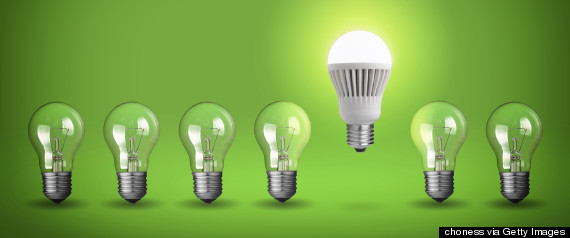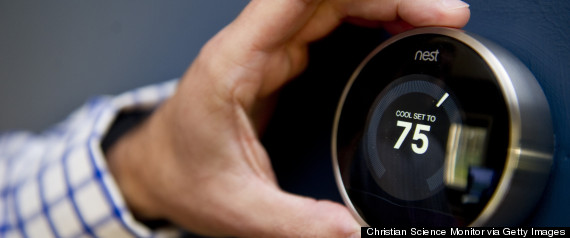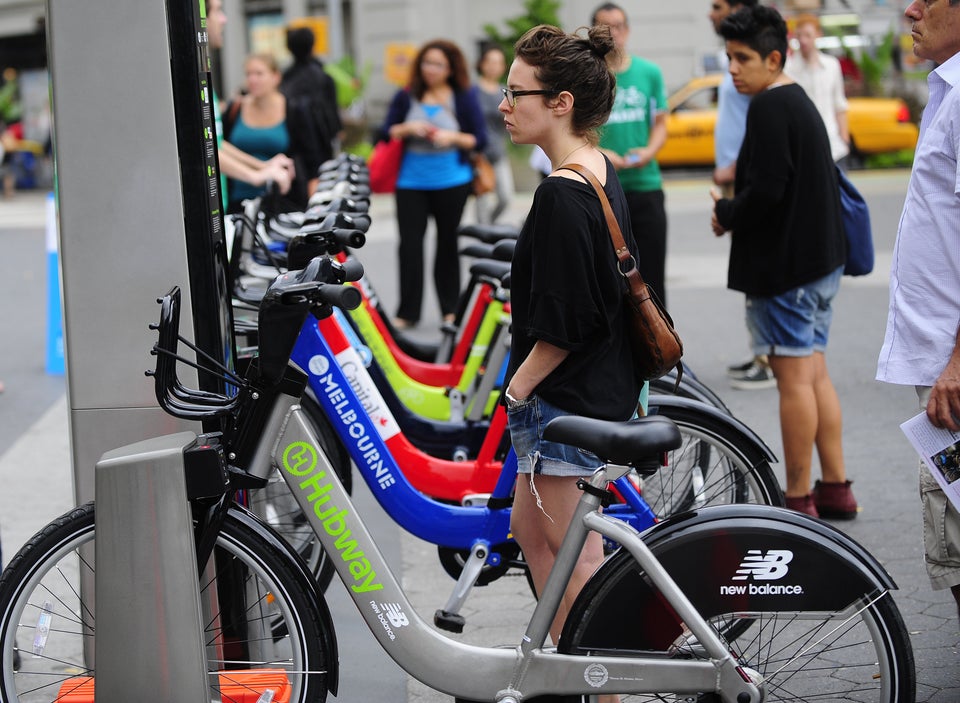Saving energy and water can be difficult, but now there are plenty of gadgets on the market that aim to make the process easier for you. From smart light bulbs to thermostats that learn your habits to motion-sensing power strips, being green has become part of the home automation craze sweeping the nation.
Here are some of the cool options available, including budget options that will help conserve without breaking the bank.
Lightbulbs

There’s a lot of room for improvement over the traditional light bulb, but by far the best energy-saving innovations are in LED light bulbs. Not only do LED bulbs use up to 80 percent less energy compared to traditional incandescents, they last up to 25 times longer, according to the U.S. Department of Energy.
Although the energy savings of LEDs are on the same scale as compact fluorescent bulbs (CFLs), they are now being made with added “smart” features to help you save even more energy by using less light. One smart light, the recently introduced Stack Alba smart bulb, changes brightness or turns off based on the time of day, how bright the room is and whether or not someone is home. Its developers say it will learn users' habits and respond accordingly. The Philips Hue is a similar LED bulb that lets you use an app to control your lights. You can even send a text message to tell your lights to turn off!
If you don’t want to deal with smart bulbs, you can purchase motion detectors or smart light switches that work with both regular CFLs and LED lights. Belkin WeMo offers both of these options and allows you to use an app to control your lights. You can set rules for your lighting, like setting times for lights to turn on and off, or you can use Siri on your iPhone to tell them to turn off.
The bottom line: Smart lighting, if used correctly, can help you cut down your energy consumption while saving money on your electricity bill.
Budget option: You can forget the smart bulbs, but switch your lights over to LEDs as your current bulbs burn out. LEDs are now priced under $10 each, such as this bulb from Cree, which lasts decades and is covered by a 10-year warranty.
Air Conditioners and Heating

Air conditioning accounts for only 6 percent of household energy use nationwide, while space heating accounts for around 40 percent. But this can vary a lot depending on where you live. For example, in Arizona, 25 percent of energy is used for air conditioning and only 15 percent for heating, according to the U.S. Energy Information Administration.
If you have central heating and cooling, the Nest Learning Thermostat is a favorite, earning a #1 bestseller tag on Amazon and glowing reviews on CNET. The thermostat learns your habits over time, allows you to make changes with your smartphone or computer and displays your energy use on a dashboard. The Environmental Defense Fund called Nest “promising” and said the technology is good at reducing peak energy demand and saving money without being disruptive.
If you don’t have central air, the Quirky+GE Aros Smart AC may be right for you. This window air conditioning unit will allow you to connect with an app to schedule your cooling as if you had a thermostat. If you don’t want to buy a whole new AC unit, Tado° offers devices that turn your “dumb” air conditioner or heating system into a smart one. Both Tado° and Aros allow you to use your phone to tell control the system when you're away from the house.
The bottom line: Smart air conditioning or heating can be expensive to install. But if you don’t have a programmable thermostat at all, you’re missing out on lots of potential savings.
Budget option: You can get a basic model with most of the features you need for $20-25, and save around $180 a year by programming correctly.
Smart Power Strips

There are lots of devices in your home that use energy constantly, even if you only use them for a few hours or minutes a day. For example, TVs, DVD players, gaming consoles, laptops and many other devices that stay plugged into the wall will draw power even when they’re not in use. To cut down on energy lost to these “energy vampires,” smart power strips shut off energy to these devices when they’re not in use.
There are a variety of simple options, from timers and motion sensors to remote controls. There are also power strips that shut off when a key device is turned off, so that if you turn off your TV, the strip also cuts power to your cable box, gaming console and DVD player. Some also disconnect the power when all the devices plugged in are turned off, preventing devices from sucking power while they are in standby mode. Check out this infographic by the Department of Energy’s National Renewable Energy Lab for more info.
You can also get really fancy and use your smartphone to control outlets. The Belkin WeMo Insight outlet, for example, lets you turn off devices with your phone, track energy use, set alerts and more.
Bottom line: These power strips can definitely help you cut electricity loss and don't have to cost a fortune. They key, depending on the technology you choose, is setting them up and remembering to use them.
Budget option: The easiest way to deal with vampire energy is to just unplug all of your devices when you're not using or charging them (including cell phone chargers). You can also use a regular power strip with a switch to cut power to many devices at once, saving the number of plugs you’ll have to pull. They can cost less than $10 each and help you save up to 10 percent on your electricity bill.
Shower Savers

We’ve talked about saving energy, now its time to consider your water use. Only 16 percent of household water is used in the shower, but it is something we have a lot of control over on a daily basis. A lot of tech innovations have focused on how to use less water and take less time in the shower. For example, this shower head changes color when you’ve been in too long. User testing has found that it decreases time spent in the shower by 12 percent.
There are also devices that help you save water, like the Oxiget aerating showerhead, which reduces water consumption by 50 percent without compromising water pressure. The Evolve shower head or adapter stops running water as soon as it gets hot, which saves the water we often lose while waiting for the shower to heat up.
Bottom line: All three of these will save water in one way or another. Now, if only we could use all three of these at once!
Budget option: You can install a water-flow restrictor in your shower, if you don’t have one already. This slows the amount of water coming through your showerhead. You can also switch to an inexpensive WaterSense labeled showerhead, which can cost less than $10, and add WaterSense aerators to your faucets to save water and energy.
Green Apps

Beyond fancy equipment, knowledge is power when it comes to greening your home. While not technically gadgets, these apps will help give you the know-how to make environmentally-friendly decisions.
You can use an electricity-tracking app to help monitor your energy usage, drawing the information from either your energy bill or from direct data sent from your utility company. Apps like WattBuddy, Kill-Ur-Watts, Leafully and others do just this, though some only work with certain utility companies. Check your local utility's website to see if they have an app or the ability to work with one. By tracking your consumption, you can find out which habits help you save.
You can make greener purchasing decisions by using an app like GoodGuide or Ethical Barcode. These apps collect data about companies to help you sort through which products are actually green and which ones are just pretending. They also record other data on company ethics, safety and health.
You can find local recycling centers (including ones that take refuse like batteries, hazardous materials and lawn waste) using the iRecycle app. And educate yourself on all sorts of water saving activities using a variety of water conservation apps, like Water Use Calculator or H2O Tracker.
Bottom line: Apps can help you learn to make green decisions and develop water and energy-saving habits.
Budget option: These apps are all free, so no excuses.
It’s important to remember that a green home isn't just achieved by using cool gadgets. While technology can definitely help, good energy and water habits are also a must. Check out the Department of Energy’s Energy Saver website and the Environmental Protection Agency’s WaterSense program for great information on reducing your consumption.
